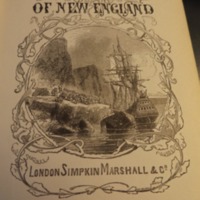Description
Annie Webb-Peploe (1805–1869) was born in Ludlow, Shropshire, the daughter of Captain John Molyneux (1769-1832) and Ella Molyneux (1780-1836). In 1828 she married John Birch Webb (1776–1869), the vicar of Weobly, Herefordshire. The family took the name "Peploe" in 1866. Little-known today, Annie Webb-Peploe was a prolific Victorian author who published over twenty novels in her lifetime. These were often historical romance narratives with strong Christian moral themes. Her first novel, Naomi: or, The Last Days of Jerusalem (1841) was also her most popular; going through at least 18 editions in the nineteenth century and re-printed into the twentieth, Naomi was later published in the United States and translated into Danish (1892) and German (1900). The preface to the seventeenth edition of Naomi exemplifies the strong religious message that characterizes Webb-Peploe’s writing. Composed in the spirit of ‘the highest duties of Christian charity’ Webb-Peploe hopes that the ‘hearts of multitudes of Christians are awakened to feelings of love and sympathy towards their elder brethren of the Jewish Church’. In addition to a robust Christian message, Webb-Peploe’s novels feature dramatic and exciting sequences that typify Victorian historical romance fiction, which may also go some way to accounting for their enduring popularity throughout the nineteenth century.
The Pilgrims of New England (1853) is a similar tale of adventure and self-sacrifice. The frontispiece provides a dramatic picture of the dangerous voyage relayed in the text Peploe’s introduction gives a detailed breakdown of her intension for the novel, which are to ‘illustrate the manners and habits of the earliest Puritan settlers in New England, and the trials and difficulties to which they were subjected during the first years of their residence in their adopted country’. The novel is well researched, making use of William Bradford’s 17th century history of the colony, a detail highlighted by Webb-Peploe: ‘[a]ll the principal incidents that are woven into the narrative are strictly historical, and are derived from authentic sources, which give an impartial picture both of the virtues and the failings of these remarkable emigrants’.

